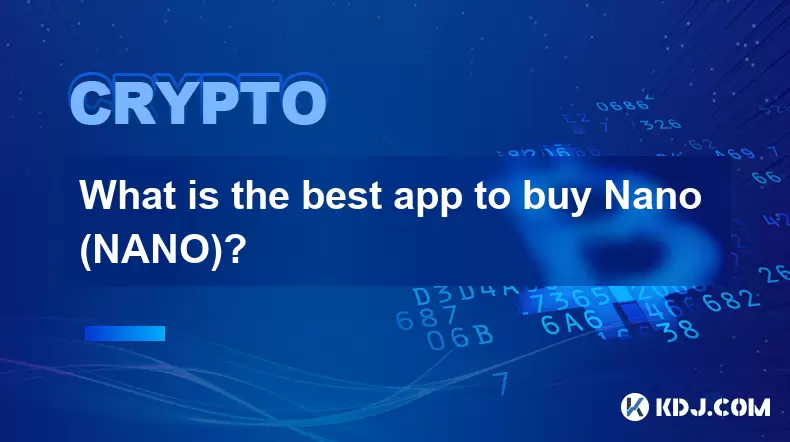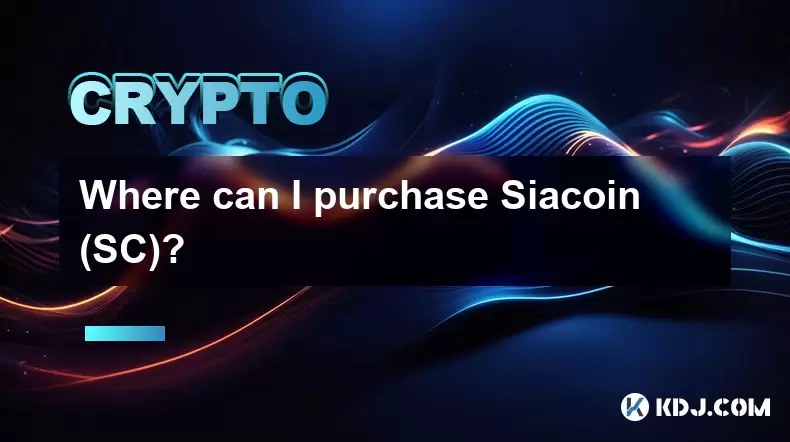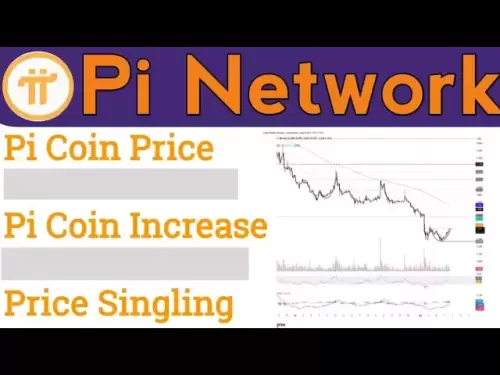-
 Bitcoin
Bitcoin $118300
1.01% -
 Ethereum
Ethereum $4215
0.69% -
 XRP
XRP $3.198
-3.83% -
 Tether USDt
Tether USDt $1.000
-0.01% -
 BNB
BNB $803.4
-0.53% -
 Solana
Solana $180.3
-0.67% -
 USDC
USDC $0.9998
-0.01% -
 Dogecoin
Dogecoin $0.2334
-1.49% -
 TRON
TRON $0.3394
0.86% -
 Cardano
Cardano $0.7980
-1.45% -
 Chainlink
Chainlink $22.19
6.65% -
 Hyperliquid
Hyperliquid $43.41
0.13% -
 Stellar
Stellar $0.4407
-3.13% -
 Sui
Sui $3.843
-2.24% -
 Bitcoin Cash
Bitcoin Cash $564.7
-3.74% -
 Hedera
Hedera $0.2588
-3.41% -
 Ethena USDe
Ethena USDe $1.001
0.00% -
 Avalanche
Avalanche $23.64
-3.37% -
 Litecoin
Litecoin $120.0
-4.01% -
 Toncoin
Toncoin $3.342
-1.11% -
 UNUS SED LEO
UNUS SED LEO $9.038
0.60% -
 Shiba Inu
Shiba Inu $0.00001347
-0.81% -
 Uniswap
Uniswap $10.69
-4.58% -
 Polkadot
Polkadot $4.034
-1.30% -
 Dai
Dai $1.000
0.01% -
 Bitget Token
Bitget Token $4.472
-1.52% -
 Cronos
Cronos $0.1571
-3.04% -
 Pepe
Pepe $0.00001207
-2.21% -
 Monero
Monero $273.8
-3.19% -
 Ethena
Ethena $0.7520
2.75%
How is the liquidity of ADA?
Cardano's (ADA) liquidity varies widely; major centralized exchanges offer high liquidity, while decentralized exchanges show growth but lower depth. Market conditions, regulations, and overall crypto sentiment significantly impact ADA's liquidity, requiring a multifaceted assessment for informed trading decisions.
Mar 05, 2025 at 01:06 pm

Key Points:
- Cardano's (ADA) liquidity is a complex issue, varying across different exchanges and trading pairs.
- While centralized exchanges offer significant ADA liquidity, decentralized exchanges (DEXs) are growing but generally have lower liquidity.
- Factors influencing ADA liquidity include trading volume, market capitalization, regulatory environment, and the overall cryptocurrency market sentiment.
- Assessing ADA liquidity requires considering various metrics and platforms, not just a single data point.
- Understanding the nuances of ADA liquidity is crucial for traders and investors making informed decisions.
How is the Liquidity of ADA?
Cardano's native token, ADA, enjoys a considerable level of liquidity, but its depth isn't uniform across all trading venues. Major centralized exchanges (CEXs) like Binance, Coinbase, and Kraken typically boast high ADA trading volumes, ensuring relatively smooth execution of buy and sell orders, even for large quantities. However, the depth of the order book, a key indicator of liquidity, can fluctuate based on market conditions and overall trading activity.
Liquidity on decentralized exchanges (DEXs) presents a different picture. While DEXs offer the benefit of decentralization and permissionless trading, their liquidity pools for ADA are generally smaller compared to CEXs. This can lead to higher slippage, meaning the actual price you buy or sell at may differ significantly from the quoted price, especially for larger trades. The growth of DEXs for ADA is ongoing, though, and improving liquidity.
Several factors influence ADA's overall liquidity. Its market capitalization, being among the top cryptocurrencies, contributes significantly to its liquidity. High trading volume across various exchanges further reinforces its liquidity. However, external factors like regulatory changes impacting cryptocurrency markets or broader market downturns can temporarily reduce liquidity on all platforms.
Measuring ADA liquidity requires a multi-faceted approach. Simply looking at the trading volume on a single exchange provides an incomplete picture. A comprehensive analysis needs to consider the depth of the order book on different exchanges, the spread between bid and ask prices, and the availability of ADA across various trading pairs.
The regulatory environment also plays a crucial role. Changes in regulations can affect the operations of exchanges, impacting the ease with which ADA can be bought or sold. This is particularly true for exchanges operating in jurisdictions with strict regulatory frameworks. These regulations can influence the level of liquidity available to traders in different regions.
Different Types of Liquidity for ADA
Understanding ADA's liquidity involves recognizing different types and sources. Centralized exchanges (CEXs) represent the most readily available liquidity for the average trader. These platforms maintain large order books, facilitating relatively quick and efficient trading. However, reliance on CEXs introduces counterparty risk, as the exchange holds custody of the assets.
Decentralized exchanges (DEXs) offer an alternative approach. They provide permissionless trading and eliminate the need to trust a central authority. However, the liquidity on DEXs is typically fragmented across various liquidity pools and often less substantial than on CEXs. This can result in higher transaction fees and slippage.
Liquidity also depends heavily on the trading pair. ADA paired with Bitcoin (BTC) or Ethereum (ETH) usually enjoys higher liquidity than pairings with less-traded cryptocurrencies. The availability of trading pairs influences how easily ADA can be exchanged for other assets.
Assessing ADA's Liquidity: Metrics and Tools
Several metrics help assess ADA liquidity. Trading volume is a straightforward measure, showing the total amount of ADA traded over a specific period. However, it doesn't fully capture the depth of the market. The order book depth, reflecting the number of buy and sell orders at various price levels, is a more comprehensive indicator.
Analyzing the bid-ask spread helps gauge the cost of trading. A narrow spread suggests high liquidity, while a wide spread indicates lower liquidity and potential price slippage. These metrics are available through various cryptocurrency data providers and exchange platforms.
Factors Affecting ADA Liquidity
Several macroeconomic factors influence ADA's liquidity. The overall cryptocurrency market sentiment plays a significant role. During bullish periods, trading volume increases, leading to improved liquidity. Conversely, bear markets often see reduced trading activity and lower liquidity.
Technological advancements within the Cardano ecosystem also impact liquidity. The development and adoption of new decentralized applications (dApps) built on Cardano can drive demand for ADA, potentially increasing liquidity. Conversely, delays or setbacks in development could negatively affect liquidity.
Future Outlook for ADA Liquidity
Predicting future liquidity is challenging. However, several factors suggest potential growth. The increasing adoption of Cardano's blockchain technology and the expanding DeFi ecosystem on the platform are likely to increase demand for ADA, potentially boosting its liquidity. Furthermore, the ongoing development of DEXs on Cardano may contribute to greater decentralization and liquidity within the ecosystem.
Frequently Asked Questions:
Q: Is ADA liquid enough for large trades? A: While generally liquid, very large trades might experience slippage on some exchanges, especially DEXs. CEXs usually handle larger trades better.
Q: How does regulatory uncertainty affect ADA liquidity? A: Regulatory uncertainty can lead to decreased trading volume and liquidity as investors become hesitant.
Q: Where is the best place to trade ADA for high liquidity? A: Major CEXs like Binance, Coinbase, and Kraken typically offer the highest liquidity.
Q: What are the risks of low ADA liquidity? A: Low liquidity can result in wider bid-ask spreads, increased slippage, and difficulty executing large trades at desired prices.
Q: How can I monitor ADA liquidity? A: You can monitor trading volume, order book depth, and bid-ask spreads on various cryptocurrency data websites and exchanges.
Disclaimer:info@kdj.com
The information provided is not trading advice. kdj.com does not assume any responsibility for any investments made based on the information provided in this article. Cryptocurrencies are highly volatile and it is highly recommended that you invest with caution after thorough research!
If you believe that the content used on this website infringes your copyright, please contact us immediately (info@kdj.com) and we will delete it promptly.
- Dogwifhat's Comeback: Solana Meme Coin Mania and Beyond!
- 2025-08-10 18:30:15
- Shiba Inu Price Drop Alert: Can Google AI Predict the Future?
- 2025-08-10 18:30:15
- NEAR Protocol Rebound: Eyes on $4.63 as Bullish Momentum Builds
- 2025-08-10 17:30:13
- Bitcoin Cash Halving: Will the Price Fall or Fly?
- 2025-08-10 17:30:13
- Uniswap (UNI) Under Bearish Pressure: A Technical Analysis Deep Dive
- 2025-08-10 17:30:15
- DOT Price on the Rise: Polkadot's Bullish Momentum Heats Up!
- 2025-08-10 17:30:15
Related knowledge

How to purchase Aragon (ANT)?
Aug 09,2025 at 11:56pm
Understanding Aragon (ANT) and Its PurposeAragon (ANT) is a decentralized governance token that powers the Aragon Network, a platform built on the Eth...

What is the most secure way to buy Ocean Protocol (OCEAN)?
Aug 10,2025 at 01:01pm
Understanding Ocean Protocol (OCEAN) and Its EcosystemOcean Protocol (OCEAN) is a decentralized data exchange platform built on blockchain technology,...

Where can I buy UMA (UMA)?
Aug 07,2025 at 06:42pm
Understanding UMA and Its Role in Decentralized FinanceUMA (Universal Market Access) is an Ethereum-based decentralized finance (DeFi) protocol design...

How to buy Storj (STORJ) tokens?
Aug 09,2025 at 07:28am
Understanding Storj (STORJ) and Its Role in Decentralized StorageStorj is a decentralized cloud storage platform that leverages blockchain technology ...

What is the best app to buy Nano (NANO)?
Aug 09,2025 at 03:35am
Understanding Nano (NANO) and Its Unique FeaturesNano is a feeless, instant cryptocurrency designed for fast peer-to-peer transactions. Unlike many ot...

Where can I purchase Siacoin (SC)?
Aug 08,2025 at 11:14am
Understanding Siacoin (SC) and Its Role in the Sia NetworkSiacoin (SC) is the native cryptocurrency of the Sia decentralized cloud storage platform, a...

How to purchase Aragon (ANT)?
Aug 09,2025 at 11:56pm
Understanding Aragon (ANT) and Its PurposeAragon (ANT) is a decentralized governance token that powers the Aragon Network, a platform built on the Eth...

What is the most secure way to buy Ocean Protocol (OCEAN)?
Aug 10,2025 at 01:01pm
Understanding Ocean Protocol (OCEAN) and Its EcosystemOcean Protocol (OCEAN) is a decentralized data exchange platform built on blockchain technology,...

Where can I buy UMA (UMA)?
Aug 07,2025 at 06:42pm
Understanding UMA and Its Role in Decentralized FinanceUMA (Universal Market Access) is an Ethereum-based decentralized finance (DeFi) protocol design...

How to buy Storj (STORJ) tokens?
Aug 09,2025 at 07:28am
Understanding Storj (STORJ) and Its Role in Decentralized StorageStorj is a decentralized cloud storage platform that leverages blockchain technology ...

What is the best app to buy Nano (NANO)?
Aug 09,2025 at 03:35am
Understanding Nano (NANO) and Its Unique FeaturesNano is a feeless, instant cryptocurrency designed for fast peer-to-peer transactions. Unlike many ot...

Where can I purchase Siacoin (SC)?
Aug 08,2025 at 11:14am
Understanding Siacoin (SC) and Its Role in the Sia NetworkSiacoin (SC) is the native cryptocurrency of the Sia decentralized cloud storage platform, a...
See all articles

























































































